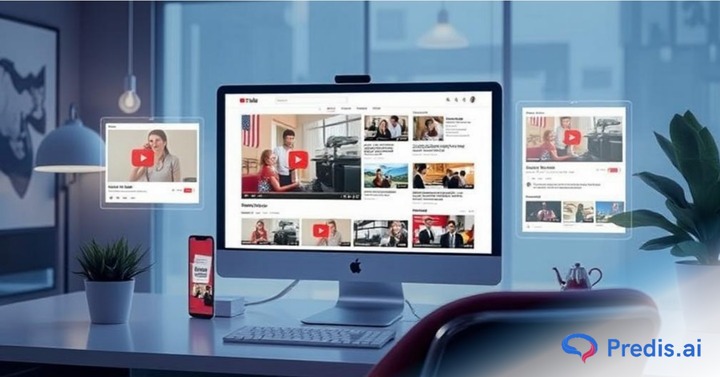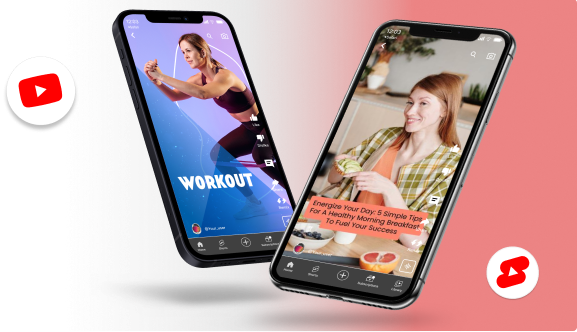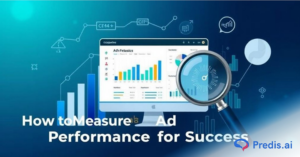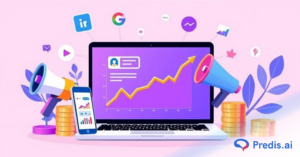If you’ve ever wondered how YouTube seems to serve just the right ad at the right moment, you’re already seeing dynamic ad insertion in action. It’s what makes your ad experience feel relevant and timely, rather than repetitive or random.
Dynamic ad insertion (DAI) is a smarter way for YouTube creators and advertisers to manage video ads. It replaces the traditional, one-size-fits-all approach with ads that change automatically based on who’s watching, when they’re watching, and even where they’re watching from. The result? Better monetization for creators, more effective campaigns for advertisers, and a smoother experience for viewers.
And with an approximate 2.7 billion monthly active users, this ad insertion method is a game-changer.
Static Ads vs Dynamic Ads
Before diving deeper, let’s clear up what makes dynamic ad insertion such a game-changer by comparing it to static ads.
Static Ads
Static ads are the traditional form of advertising. Once a creator uploads a video with a sponsor segment or a brand uploads a pre-made ad, that content doesn’t change. If you need to update the message, pricing, or product, you have to manually edit and re-upload the video.
The downside:
- Outdated promotions can’t be easily removed.
- Every variation needs a separate upload or campaign.
- It’s harder to tailor ads to different audiences.
Dynamic Ads
Dynamic ads, on the other hand, evolve automatically. The ad that plays within a YouTube video isn’t locked in — it’s chosen dynamically at the time of viewing. This means a viewer in Mumbai might see a different ad than someone watching the same video in London.
The upside:
- Ads can change without editing the video.
- Different audiences can see ads tailored to them.
- Campaigns stay fresh and relevant with minimal effort.
It’s a bit like replacing a billboard with a digital screen — you can update the message instantly, whenever you want.
What Exactly is Dynamic Ad Insertion on YouTube?
Dynamic ad insertion is YouTube’s way of automating how ads are placed inside videos — both live and on-demand. Instead of having one ad permanently attached to a video, YouTube now lets ads be “inserted” dynamically, meaning they can be swapped out, localized, or personalized on the fly.
Think of it as YouTube’s version of “smart ad placement.” It gives advertisers flexibility to run campaigns that adjust automatically, and it gives creators the ability to keep earning long after an ad deal ends.
For example, if you uploaded a video six months ago with a mid-roll ad slot, YouTube can now fill that slot with a brand-new ad — even though the video hasn’t changed. That same slot can host multiple campaigns over time, making your content more profitable and adaptable.
How Dynamic Ad Insertion Works?
Let’s keep it simple.
When you upload a video to YouTube, there are designated spots where ads can appear — before, during, or after your content. With dynamic ad insertion, these spots aren’t filled permanently. Instead, YouTube automatically selects which ad to show each viewer based on factors like:
- Their interests and watch history
- Where they’re located
- The device they’re using
- What’s trending at that moment
So while two viewers might watch the same video, they could see entirely different ads — and those ads can change over time.
This flexibility benefits everyone involved:
- Viewers see ads that actually interest them.
- Advertisers reach the audiences most likely to engage.
- Creators keep monetizing old videos with new ad opportunities.
Why Dynamic Ad Insertion Matters on YouTube?
1. For Creators — More Ways to Earn
Before DAI, if you made a sponsored video and the campaign ended, that ad slot became useless. Now, dynamic ad insertion lets YouTube continuously fill that space with new ads — even months later. That means your evergreen videos can keep generating ad revenue without extra effort.
Creators can also:
- Replace outdated brand deals without re-editing videos.
- Offer region-specific ad slots for global audiences.
- Maximize revenue by keeping old content fresh and monetized.
2. For Advertisers — Smarter Campaigns, Better Results
Dynamic ad insertion makes YouTube advertising much more efficient. Instead of blasting the same ad to everyone, you can deliver tailored messages that match the viewer’s context.
For instance, a sports brand can automatically show a cricket-related ad in India and a soccer-related ad in Europe — all within the same campaign. It’s personalization at scale.
Other advantages include:
- Easy A/B testing of ad creatives
- Faster updates for promotions or offers
- Improved ad relevance and conversion rates
3. For Viewers — A Better Experience
Let’s be honest — no one loves seeing the same ad over and over. DAI helps reduce that fatigue by showing ads that align with viewer preferences and behavior. Since ads are “stitched” into the video stream smoothly, playback feels seamless — fewer lags or awkward transitions.
How to Set Up Dynamic Ad Insertion on YouTube?
You don’t need to be an engineer to get started. Here’s a straightforward way to think about it:
Step 1: Choose the Right Campaign Type
If you’re an advertiser, start within Google Ads or Display & Video 360 (DV360). You’ll find options that let you enable dynamic ad delivery or feed-based campaigns for YouTube placements.
If you’re a creator, make sure your videos are monetized and eligible for ad placements. YouTube automatically uses dynamic insertion for certain ad formats if your content meets its guidelines.
Step 2: Define Your Ad Slots
Decide where you want ads to appear — pre-roll, mid-roll, or post-roll. YouTube uses these as insertion points to dynamically serve the best possible ad.
Step 3: Add or Connect Your Feed (Advertisers Only)
Advertisers can upload a feed (like a product catalog or service list) that helps generate dynamic creatives. This allows ads to automatically showcase products or deals relevant to each viewer.
Step 4: Use Tools to Create Ad Variants
Creating endless versions of your ads manually is impossible. That’s where AI tools like Predis come in. With Predis, you can generate multiple YouTube-ready ad variants in minutes — different lengths, visuals, and messaging — so you have plenty of options for your DAI campaigns.
Predis can take a product file or idea and automatically create compelling ad videos optimized for YouTube. This means you don’t have to worry about production bottlenecks or creative fatigue.
For example, this is a sample UGC video that is generated with the help of Predis AI:
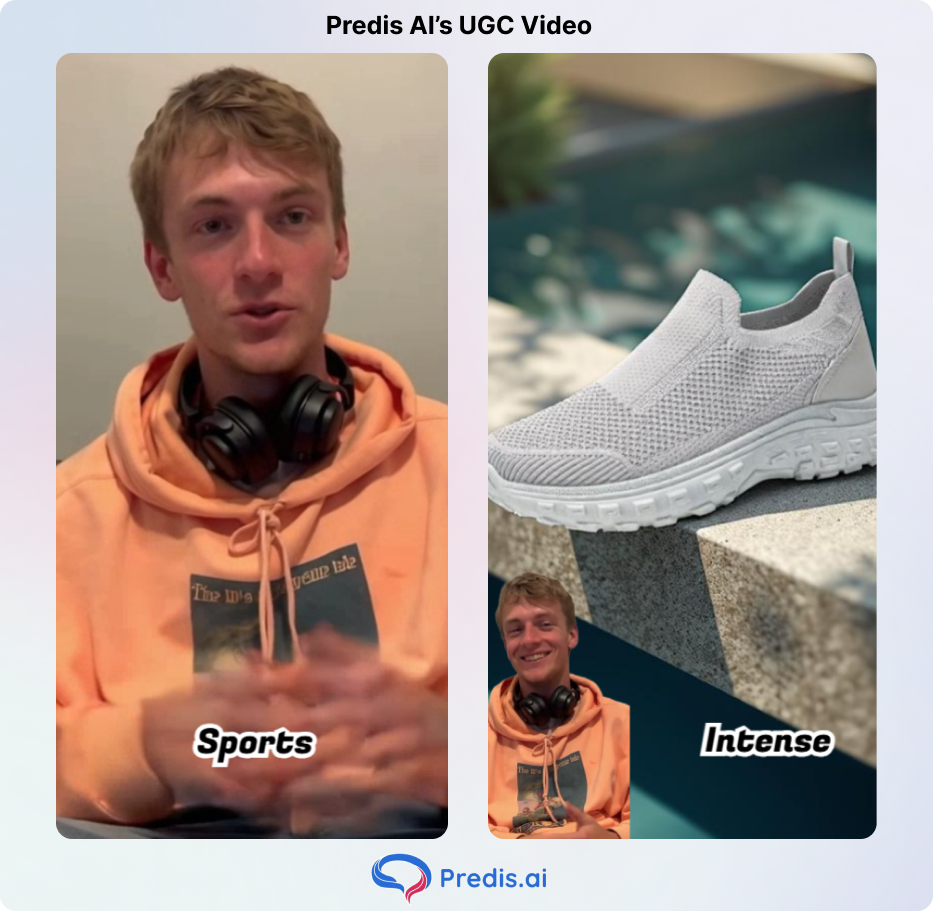
Step 5: Launch, Monitor, and Refresh
Once your campaign is live, track how your ads perform. The beauty of dynamic insertion is that you can tweak your targeting or creatives anytime — without stopping the campaign. Review metrics like click-through rates, conversions, and watch time to refine your approach.
Stand Out on YouTube Shorts with AI Content 🌟
Benefits of Using Dynamic Ad Insertion
Keeps Ads Fresh Automatically
You never have to worry about outdated promos running in your videos. YouTube automatically replaces expired ads with new, relevant ones.
Relevance Leads to Results
Dynamic targeting means people are more likely to respond — whether it’s clicking an ad, visiting a website, or making a purchase.
Better Viewer Experience
Because ads are seamlessly integrated, viewers are less likely to drop off or feel interrupted.
Saves Time and Creative Costs
DAI reduces the need for manual editing and re-uploads. Combined with AI tools like Predis, it can help you scale video ad production effortlessly.
Boosts Long-Term ROI
Every old video becomes a potential revenue stream. Dynamic ad insertion keeps monetization alive for years after upload.
Challenges to Keep in Mind
While dynamic ad insertion is powerful, it’s not completely hands-off. A few things to remember:
- You still need good creative assets. AI can help, but storytelling still matters.
- Data accuracy is crucial. For advertisers using product feeds, outdated info can lead to irrelevant ads.
- Not all creators have equal access. Some advanced features may roll out gradually to certain partner programs.
The key is to start small — test one or two dynamic campaigns, learn what works, and expand from there.
How Predis Fits Into the Picture?
Dynamic ad insertion may handle when and where an ad appears, but you still need compelling ad creatives to fill those slots. That’s where Predis shines.
Predis helps marketers and creators:
- Automatically generate high-quality video ads from prompts.
- Customize visuals, music, and messaging for different audiences.
- Quickly adapt creatives for YouTube formats.
When combined with YouTube’s dynamic ad insertion, Predis essentially automates both sides of the process — creation and delivery. The result? Ads that look great, reach the right people, and update automatically as your campaigns evolve.
Best Practices for Dynamic Ad Insertion
- Keep your message short and clear. Even personalized ads should grab attention quickly.
- Use audience insights. Tailor creatives for real audience segments — don’t just rely on automation.
- Refresh often. Rotate ads periodically so viewers don’t tune out.
- Monitor results. Pay attention to engagement metrics and refine your creatives over time.
- Collaborate with creative tools. Leverage AI platforms like Predis to reduce your content creation load.
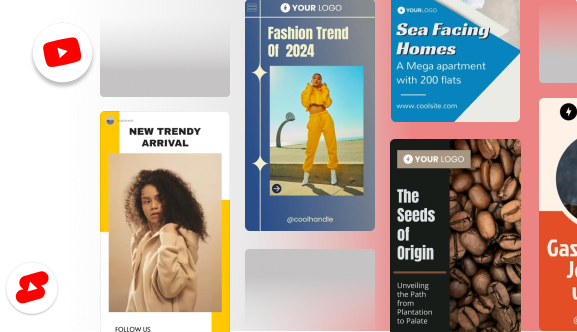
Final Thoughts
Dynamic ad insertion on YouTube represents the future of video advertising — flexible, data-driven, and user-friendly. It eliminates the limitations of static ads, giving creators more earning potential and advertisers more precision.
Whether you’re a solo creator or a large brand, DAI can turn your existing content or campaigns into living, evolving marketing assets. And with tools like Predis making ad creation faster and easier, anyone can now participate in this new era of dynamic, personalized advertising. So, sign up now!
FAQs
Not at all. While large advertisers were early adopters, YouTube and AI tools like Predis have made it accessible for smaller businesses too. Even local campaigns can use dynamic ad targeting effectively.
Yes. Once your content has ad slots enabled, YouTube can automatically fill them with new ads over time. That’s one of the biggest benefits — your old videos stay profitable.
When done right, not at all. Because they’re inserted seamlessly, viewers usually don’t notice any technical difference — only that ads feel more relevant and timely.


